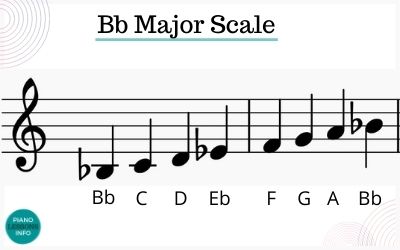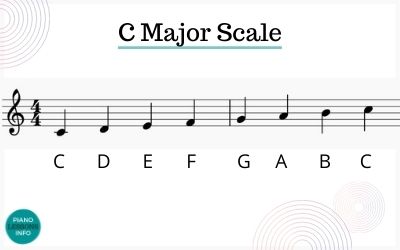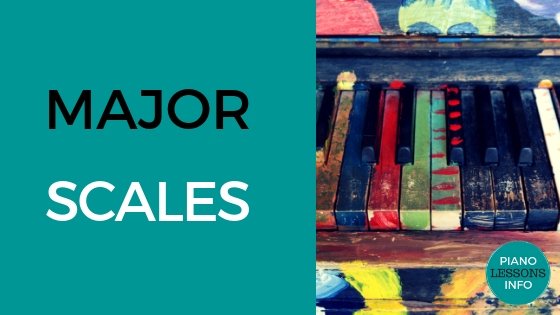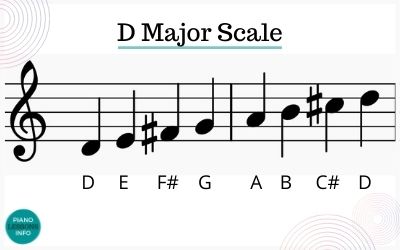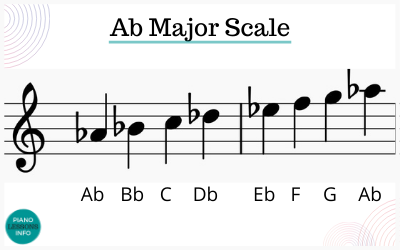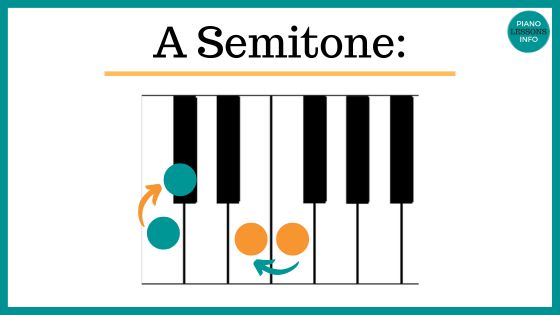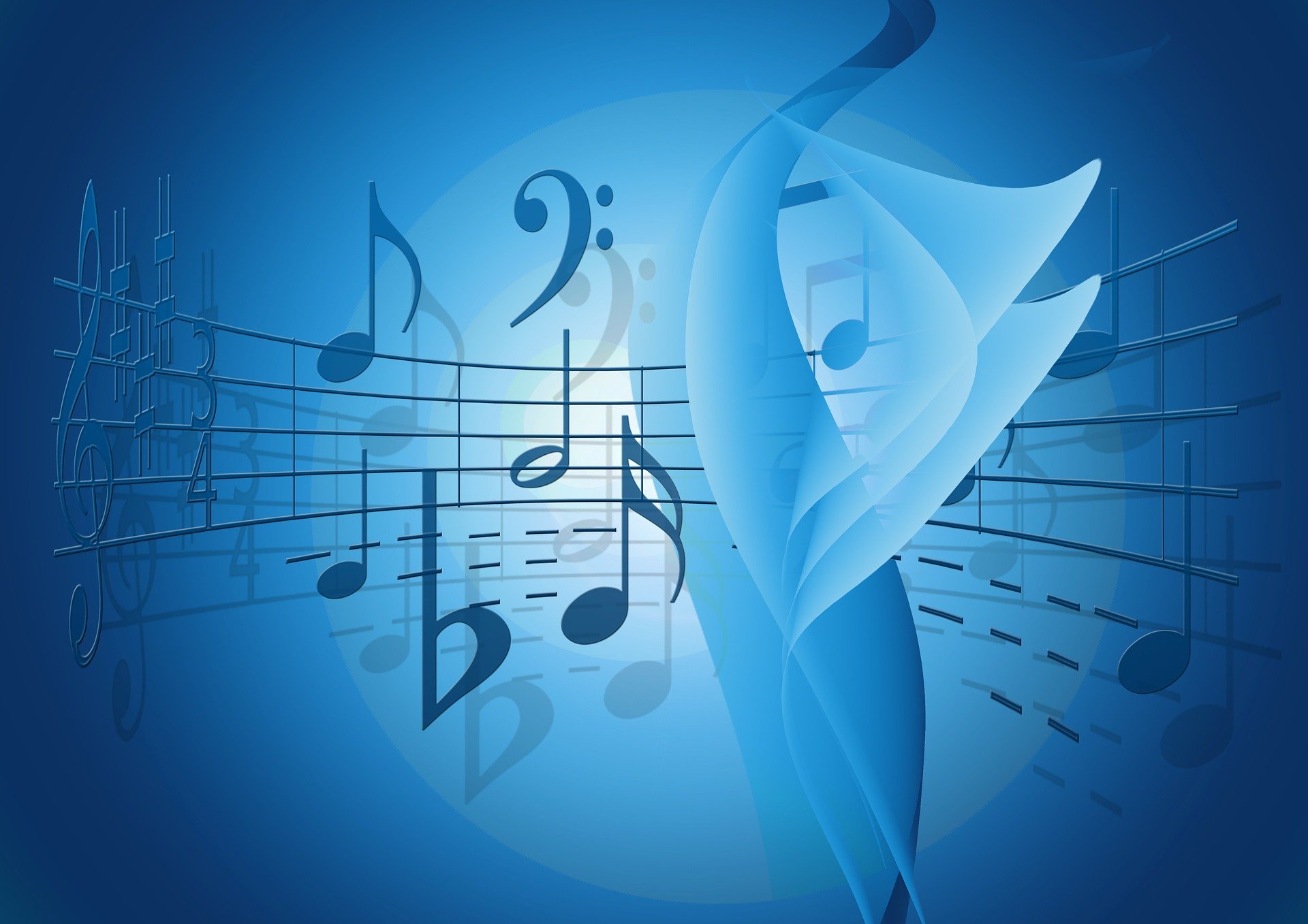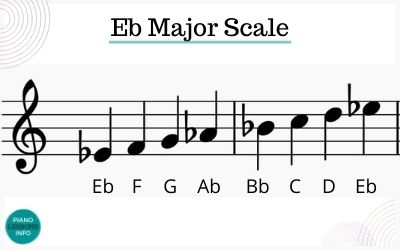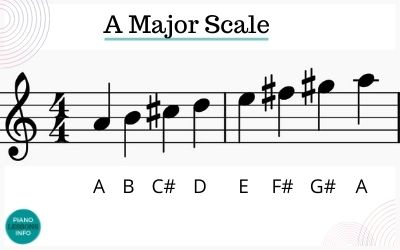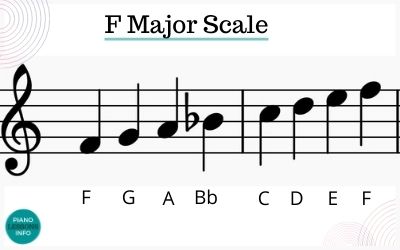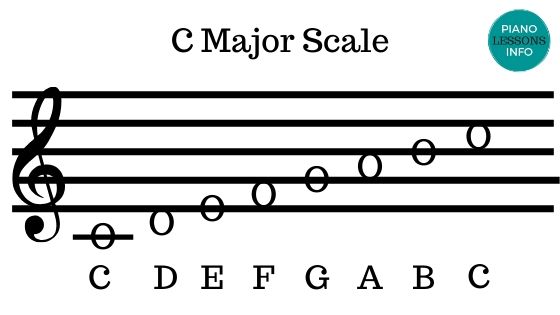G Major Scale on Piano
Notes, Fingering & How To
G major scale on piano is one of the first scales you should learn. And the first one with a sharp in it! (That's F sharp in case you were wondering.)
Learning this scale is essential for your piano journey. G is a very common key to play in and it's the first key on your journey to learning sharps.
On this page we'll go over the notes of the G scale, fingering or finger patterns for right hand and left hand so you can play it well and lay it out with the G scale pictures to top things off.
G Major Scale - Notes
The G major scale goes from G to G but not all on white notes. We have one black note to play and that's F sharp (F#).
The notes of the G major scale are: G A B C D E F# G
When playing this scale, one of the tricks is to remember this F sharp both going up and going down.
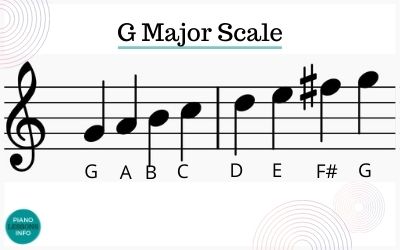 Notes of G Major Scale
Notes of G Major ScaleVideo Tutorial: G Major Scale On Piano
G Major Scale Fingering for Piano
When playing the G major scale on piano, you can use the basic scale fingering that you use for most scales (that start on white notes).
This is the fingering pattern you need to use for the G scale.
Right Hand: 1 2 3 1 2 3 4 5
Left Hand: 5 4 3 2 1 3 2 1
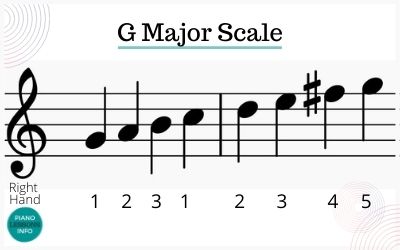 G Major Scale Right Hand Fingering
G Major Scale Right Hand FingeringIn your right hand when you play this scale, your thumb will cross under finger 3 when going up. (Finger 3 will cross back over when going down.)
In left hand, finger 3 will cross over your thumb when going up. Finger 3 will cross under your thumb when going down.
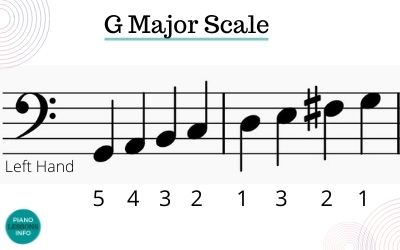 G Major Scale Left Hand Fingering
G Major Scale Left Hand FingeringFingering for all scales, including the G major scale on piano, can be found in the Complete Book of Scales, Chords and Arpeggios here on Amazon (this is an affiliate link). This is a handy resource when learning scales.
G Major Scale - Up & Down
Here are some handy little pictures for the G major scale on piano going both up and back down for the treble clef / right hand and the bass clef / left hand.
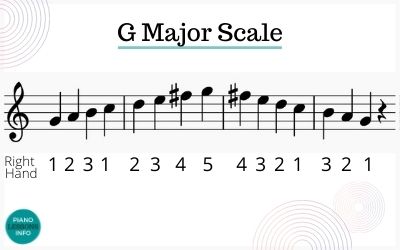
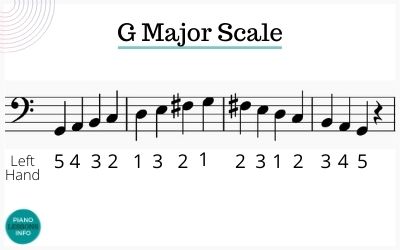
G Major Scale - 2 Octaves
When playing the G major scale 2 octaves, you'll need to slightly adjust your fingering so that you can keep going up.
Right Hand 2 Octave Fingering for G Major:
Up: 1 2 3 1 2 3 4 1 2 3 1 2 3 4 5
Down: 5 4 3 2 1 3 2 1 4 3 2 1 3 2 1
Left Hand 2 Octave Fingering for G Major:
Up: 5 4 3 2 1 3 2 1 4 3 2 1 3 2 1
Down: 1 2 3 1 2 3 4 1 2 3 1 2 3 4 5
The Key Signature of G Major
Now that you know the G major scale, you also know the key signature of G major. And that is one sharp - F#.
From now on, any key signature that has sharps in it will have F#. F# is the first of all the sharps.
Understand the G Chord From G Scale
Another great thing you can learn and understand now that you know the G major scale is the G major chord.
This chord is written as just a G and major chords are built off of the 1st, 3rd and 5th notes of the major scale.
If you look at the picture of the scale, you can see the 1st, 3rd and 5th notes are G B D. Those three notes make the G chord and you can play that now as well.
What To Practice?
This week, spend some time practicing your G major scale. If you're not sure how you should be practicing this, check out the page on the Different Ways to Practice Scales.
If you've already been playing hands separately, why not try hands together? Or try going up to 2 octaves. You can also work on speed!
There are also more scales on the 12 major scales page.
Further Resources:
Complete Book of Scales, Chords and Arpeggios here on Amazon (this is an affiliate link).
Recent Articles
-
Piano Notes Chart
Nov 20, 23 10:21 PM
Find a piano notes chart for treble clef and bass clef notes as well as the different types of notes. -
D Chord on Piano + Diagram, How To & Theory
Oct 24, 23 12:20 AM
Learn how to play the D chord on piano with diagram, fingering, D/A, D/F# and a theory explainer. -
Diminished Piano Chords: Chart & How to Make Them
Oct 09, 23 09:23 PM
Learn the different diminished piano chords and how to make them. Here you'll find both a diminished chord chart and an explanation.
Free Download:
Ultimate Chord Cheat Sheet

Subscribe below and get free access to the (printable) Ultimate Chord Cheat Sheet.




